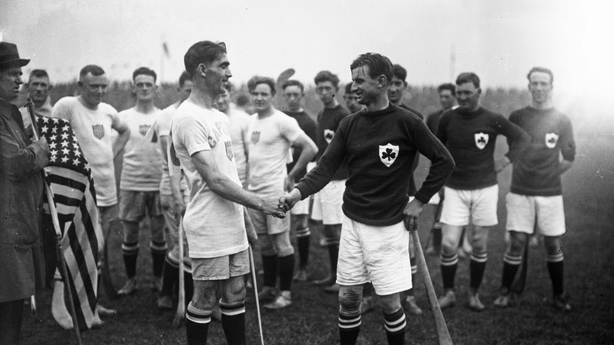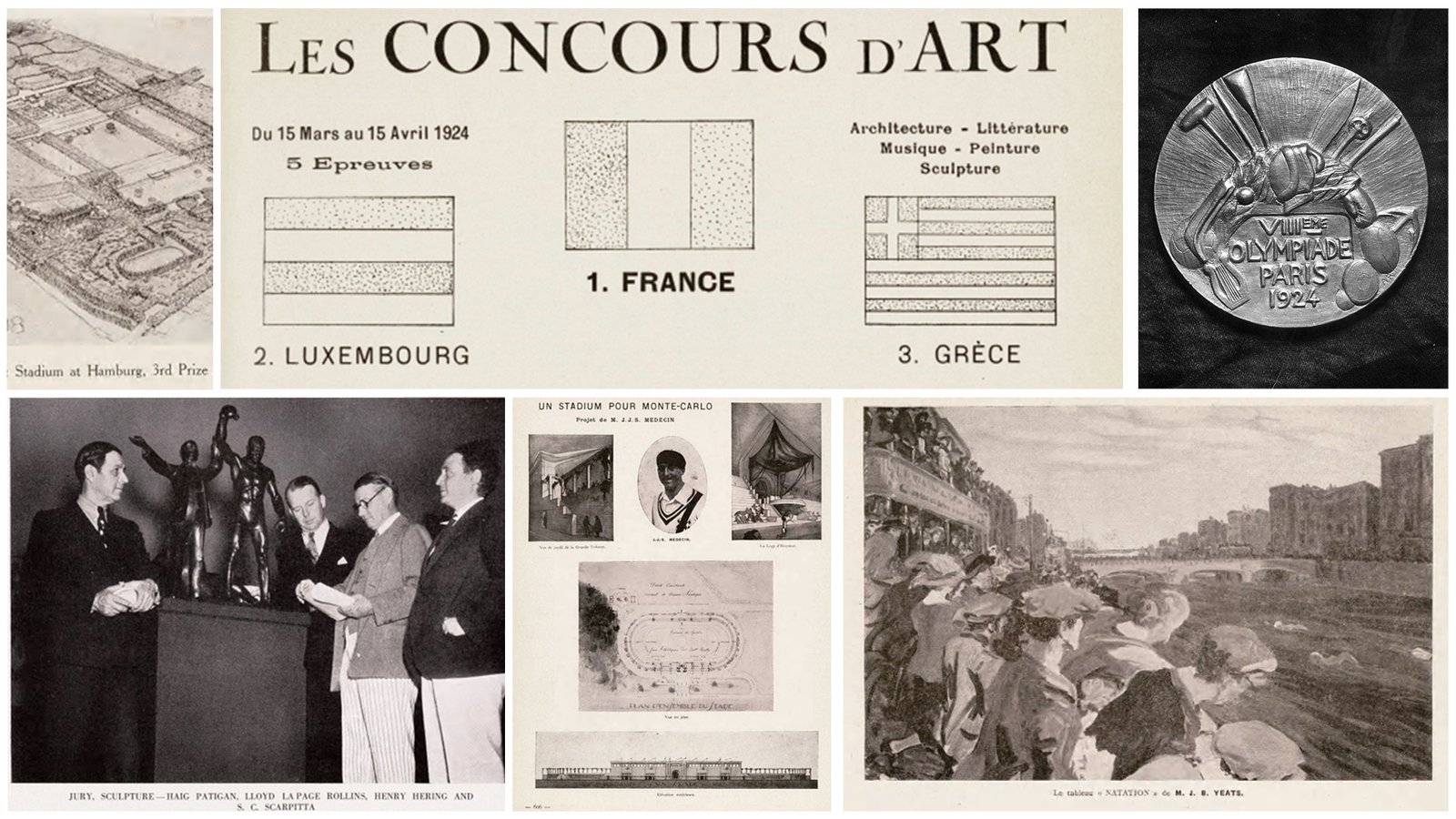It has been 100 years since Team Ireland took home its first medal at the Olympic Games at Paris 1924.
Jack B Yeats was awarded a silver medal for his painting ‘The Liffey Swim’ as part of the art competition at those games. Oliver St John Gogarty took home a bronze in the literature category for his ‘Ode to the Tailteann Games’.
The Tailteann Games, also known as Aonach Tailteann, was a festival held at Tara, Co Meath from 632BC until the last record of the event in 1168AD —just before the ‘English invasion’ of 1169. Held in honour of Queen Tailte, the games combined sporting competitions with cultural contests in poetry, music and dancing.
The Olympic Games, likewise, historically featured much more than just art and literature as part of their programme of art competitions.
Architecture, Music and Town Planning were all competed for at the Olympics in the first half of the 20th century.
Read more: The rise and fall of the Tailteann Games
The idea for creative competitions at the games came directly from the founder of the modern Olympics, Baron Pierre de Coubertin.
Prior to the official opening of the 1904 games in St Louis, Missouri, Baron de Coubertin said that he wanted art to be combined with other Olympic sports, just as it was in Ancient Greece.
It took until the Stockholm games in 1912 for this to finally become a reality.
Competitions were held for Music, Literature, Painting, Architecture and Sculpture. Participants could submit any work, as long as it had a connection to sport.
American Walter Winans crafted a bronze statuette of ‘An American Trotter’ depicting a horse pulling a sulky and won Sculpture gold.
There was a sporting connection to more than just the sculpture. Mr Winans became the first, and only, person to win a medal in both art and sport competitions at the same Olympics.
He also won silver in the Team Running Deer Shooting competition alongside his sculpture medal.
The competitions became increasingly popular over the following Games.
By 1928, 1,150 works were submitted across all art competitions. At these games, the Amsterdam Olympic Stadium, designed by Jan Wils, won gold for Architecture at the very games it was used for.
A new medal competition also saw a silver awarded for the design of the Amsterdam Olympic medals at these games.
1928 was also the first year Town-Planning featured as a competition at the Olympics.
Over the 20 years it was included in the Olympic programme, winners included the ‘Design for Sports and Recreation Centre with Stadium for Liverpool’ at Los Angeles 1932 and ‘The Centre of Athletics in Varkaus’ at Helsinki 1948.
Neither were built. It was a fate many of the Town-Planning entries suffered. Those designs served more as inspiration for certain facilities, such as Marine Park in Brooklyn, unlike many of the architecture entries – some of which were built as designed.
By the time of the 1948 Olympics, however, participation in the art competitions were waning, and those Helsinki Games saw the last art competitions held.
Irish Sports at the Olympics
Before Mr de Coubertin’s idea of art competitions at the Olympics could be realised and 20 years before Mr Gogarty wrote his bronze medal winning ode, the Olympics had held their own ode to the Tailteann Games.
The 1904 Olympic Games in St Louis, Missouri coincided with the World’s Fair. This allowed for the holding of some demonstration sports during the period of the World’s Fair and Olympic Games.
A day of ‘Olympic Irish Sports’ was held on 20 July 1904.
These events were officially recorded in Spalding’s Official Athletic Almanac of 1905 – one of the official reports for the games.

Events contested included the 100 yards run, throwing 16lb hammer and running two hops and a jump.
One hurling match and one football match were also held. The Chicago Fenians played Innisfail of St Louis in both matches.
The Fenians were victorious in football. The Chicago Tribune reported they “shut out” Innisfail on a score of 3-01 to 0-00.
Innisfail found their revenge in the hurling, winning 2-02 to 0-02.
Irish sports have not made any appearance in the Olympic Games since that one off appearance in St Louis.
This was a time of high visibility for Irish sports with the Tailteann Games still ongoing. However with Olympic sports having extended to Town-Planning before, maybe it’s not too much of a stretch to think our Gaelic Games could one day be played under the Olympic Rings.

